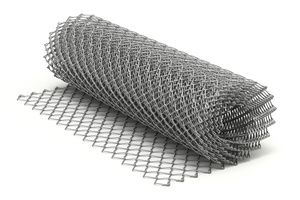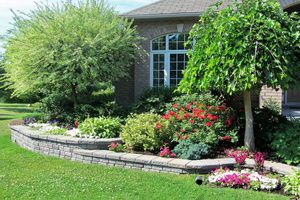A land leveling drag can help make yard maintenance much quicker and easier. If you do not own a leveling drag, you may be surprised to learn that it is possible to create your own without spending a lot of money or having strong DIY skills.
You do not need to spend hundreds or thousands of dollars on proper machinery and tools when you build your own basic leveling drag that you can pull yourself to level your lawn. Here is a look at how you can turn materials you may already have on hand into a leveling drag in under an hour.
What Is a Leveling Drag?

First, it is important to understand what a leveling drag is. As you may have gathered from the name, this is a type of tool that is designed to level a yard, driveway, parking lot or other space. Most leveling drags that are manufactured commercially are made using heavy-duty steel with a powder coating for rust resistance and durability. However, homemade leveling drags are perfectly appropriate for many home projects.
Here’s what you’ll need to build your own leveling drag:
- A piece of chain link fence: A segment that is around 4 feet wide and 6 feet long is ideal, but it is still possible to fashion one out of a bigger piece of fence if that is all you have.
- Approximately 15 feet of a rope with a 3/8 of an inch diameter
- A knife
- Cut the Rope
First, you will want to take your chain link fence section and lay it flat on a hard surface such as your driveway or garage floor. Next, cut a section of rope that measures approximately 6 feet long. There is no need to make it longer if your chain link fence is bigger because the rope will actually be attached to the 4-foot side.
- Assemble your land leveling drag
Next, tie one end of your rope to the left side of the shorter 4-foot side of your fence section. Then, you need to tie the other end of the rope to the right side of the fence. Then, pull gently on the middle of the rope to form a V shape.
Since you will be dragging your level by hand, you may wish to make a loop in the free end of the rope to make it easier to handle.
Keep in mind that chain link fencing does have a tendency to roll up, so you might wish to place some heavy objects such as bricks or blocks on your drag while you’re using it to level off your yard. If it becomes too heavy, consider attaching it to a riding mower or garden tractor if you have one.
Building a Smaller Land Leveling Drag Without a Chain Link Fence

If you do not wish to drag a large piece of chain link fence or you simply do not have a spare section of fence that you can use for this project, consider building a smaller land leveling drag.
For this project, you will need:
- Two pieces of 6×6 lumber that are between 2 and 4 feet long
- Two pieces of sturdy metal that can be used to connect your pieces of lumber to one another. A good material for this project is Unistrut; look for two pieces that are the same size and measure between 2 and 3 feet in length.
- Approximately 15 feet of rope with a 3/8-inch diameter
- Gather the lumber that you will be using for the project.
- 6 inch x 6 inch lumber is the recommended size; look for two pieces that measure 2 feet each.
- If the lumber you have happens to be cut longer, it will still work, however.
- Connect the pieces of lumber together.
- You need to use a connecting material that is around 2 feet long.
- Electrical conduit or Unistrut works well for this project.
- You will want to ensure that it is as level as possible as the connecting piece is what will be carrying out the actual leveling in this case.
- You will fit it along the bottom of your leveling drag.
- In order to keep pressure on the drag, you want to screw the two ends of your metal pieces into the 6x6s, making sure that the flat side of the Unistrut is attached to the lumber.
- Attach the rope.
- Flip your land leveling drag over and attach one end of your rope to the middle of the first cross member.
- Then, attach the rope’s other end to your riding mower or garden tractor.
What Can You Do With Your Leveling Drag?

Land leveling drags are generally used to smooth out minor bumps in order to create a more even lawn. This is not just done for aesthetic purposes; it also makes it easier to mow the lawn without cutting the grass too low or too high, or even worse, hitting a bump and potentially injuring yourself.
Holes in low spots in a lawn need to be filled before you can pass over them with your leveling drag. Soil and compost can be added to the areas in question for this purpose.
One of the advantages of building your own land leveling drag is that you can go in and customize it to suit different leveling tasks that go beyond leveling your lawn, such as leveling topsoil for gardening or gravel for constructing a parking lot or driveway.
Contact the Northern Virginia Residential Dirt Grading Professionals
Although a homemade leveling drag works well for certain projects, there are certain landscape projects where more professional equipment and skills are needed. Dirt Connections offers a range of residential dirt grading, site preparation and excavating services. Contact us today
-
to find out how we can help with our next project.
Summary

Dirt Connections was started with one goal in mind: providing quality residential and commercial construction services to clients on time and on budget. Reach out for more information on how we can support your next project.
For your convenience our estimates are free and by appointment. Call 703-940-9949 for a free estimate today!









































